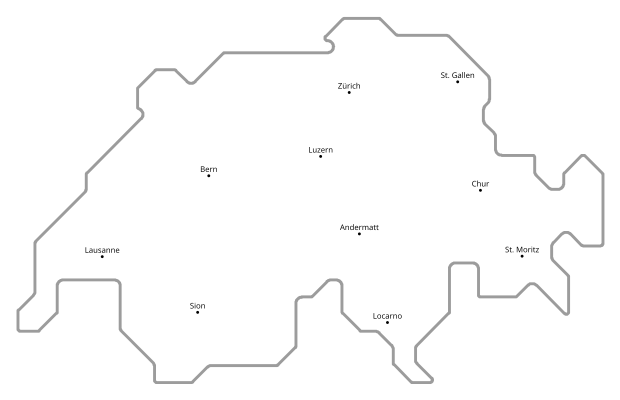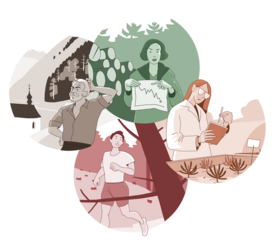16.12.2021 | Arthur Gessler, Micah Wilhelm, Michèle Kaennel Dobbertin | News WSL
How are forests doing today, and how will they cope with climate change in 15 or 40 years from now – in my town or my region? Forest managers and owners, decision-makers, teachers and otherwise interested citizens can find comprehensive answers via FORTE and FORTE Future, the new one-stop online tools developed by WSL as part of the Swiss National Center for Climate Services.
Over the past years, the need for reliable information about the current forest condition and potential future developments has grown in Switzerland. The Swiss Federal Research Institute WSL meets this need with data collected or modelled at various temporal and spatial scales – from the stem growth of trees measured at a 10-minute interval to regional canopy moisture derived from satellite data. Most of these results have been available online, some of them in real time.
One-stop access to information from various online platforms

This wealth of data has now been aggregated by WSL into user-friendly tools, FORTE (short for Forest Tree Explorer) and FORTE Future. The tools are the core of the new thematic module “Forest services and climate” of the Swiss National Center for Climate Services (NCCS – see box). They address both the current state of the Swiss forests (FORTE) and their long-term development (FORTE Future).
For example, FORTE (fig. 1) displays the current water stress and growth of 400 trees in real time or the current defoliation level of more than 1000 trees all over Switzerland. Users can combine these data in various ways, from local to national level, and superimpose data at forest level such as soil dryness, canopy moisture, or the number of bark beetle generations currently present. The displayed data are available for download as a comprehensive summary with graphs and additional information.
The second tool, FORTE Future, maps the habitat suitability of over 30 tree species in Switzerland and their potential distribution in the present and in the mid- or long-term future. It clearly shows that with the expected higher temperatures and much reduced summer precipitation, there will be losers (such as Norway spruce in figure 2) but also winners (e.g. sessile oak and pedunculate oak).
In addition to these tools, the NCCS web site conveys four key messages using fictional narratives: three forest users (Figure 3) highlight potential impacts of climate change on protective forest and recreational forests, as well as on timber production. The fourth character, a forest researcher, introduces approaches that can make forests more climate-resilient in the future. Together, these narratives aim to show that the Swiss population is already being affected in very concrete ways by the impacts of climate change on forest ecosystem services, and will be even more affected in the future.
With FORTE, FORTE Future and the four narratives, the thematic website of the NCCS on the consequences of climate change on forest functions offers an entry point for interested citizens. It is also intended to provide multipliers such as teachers and journalists with scientifically sound illustrative material.
Finally, it addresses the information needs of decision-makers in administrations and businesses who have a connection to the forest and forestry use.
The Swiss National Centre for Climate Services (NCCS)
The Swiss National Centre for Climate Services (NCCS) is the network for climate services of the Swiss Confederation.
Climate services are scientifically-based information and data about the past, present and future climate and its impacts on the environment, industry and society. They are the bedrock of climate-compatible decisions at various levels of society. The NCCS website collects existing and newly developed climate services and places them in a scientific and societal context.
Contact
Links
Additional details for specific data layers are available at:
- TreeNet (growth and water stress)
- Sanasilva Inventory (defoliation)
- Drought-CH (soil dryness)
- Remote Sensing Group, Swiss Federal Research Institute WSL (canopy moisture)
- Bark Beetle Simulation Online (bark beetles)
-
PorTree project (habitat suitability)
Copyright
WSL and SLF provide the artwork for imaging of press articles relating to this media release for free. Transferring and saving the images in image databases and saving of images by third parties is not allowed.


